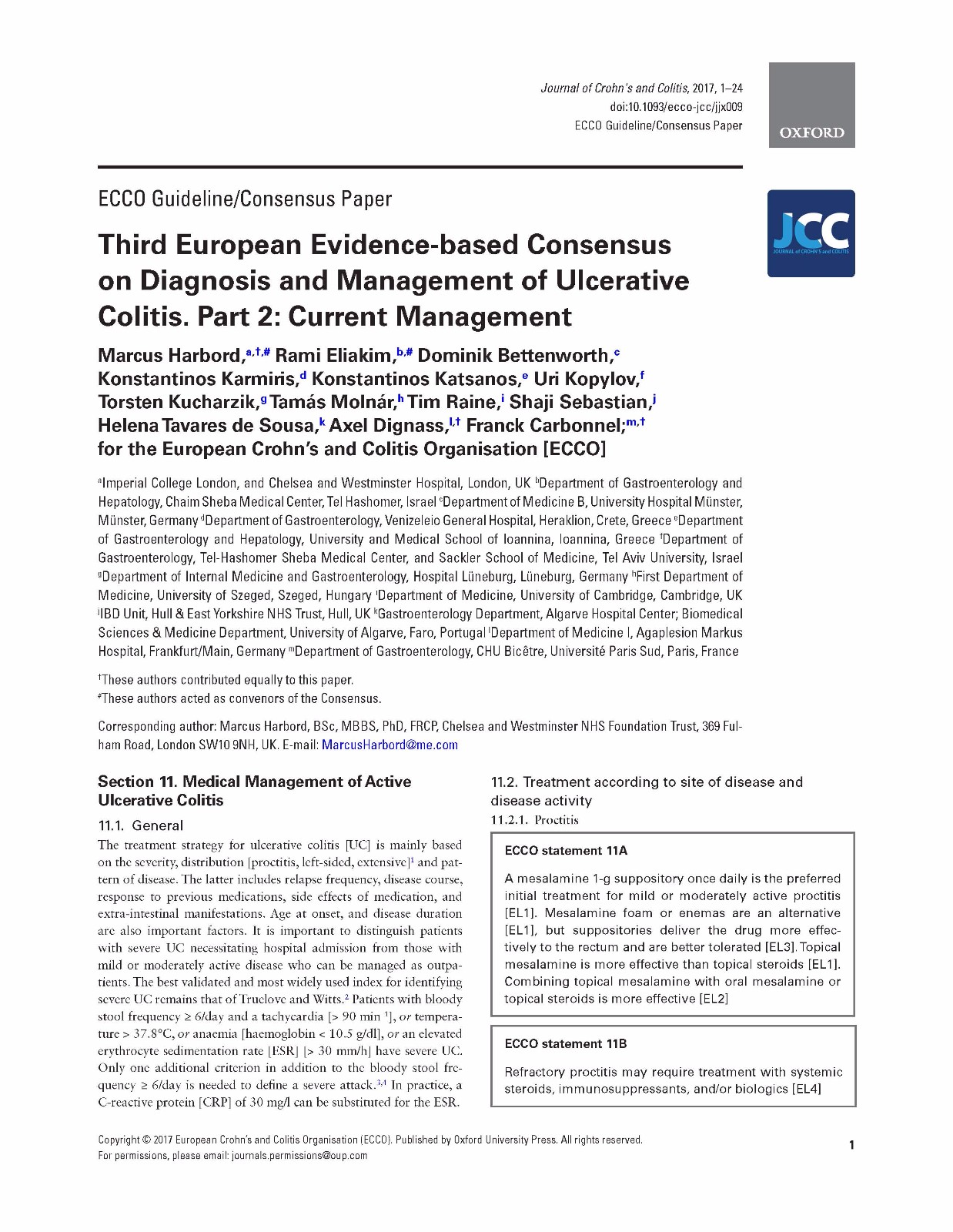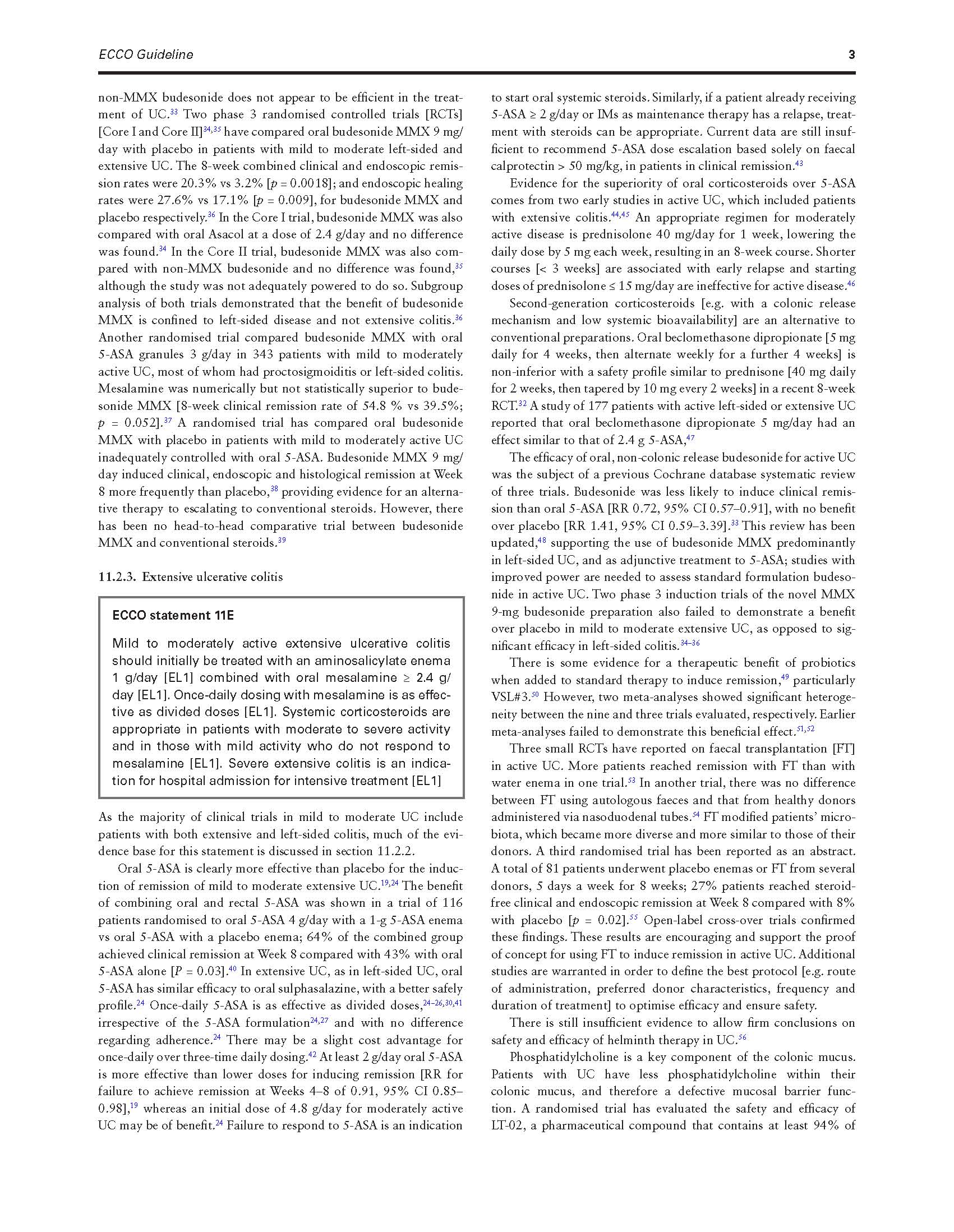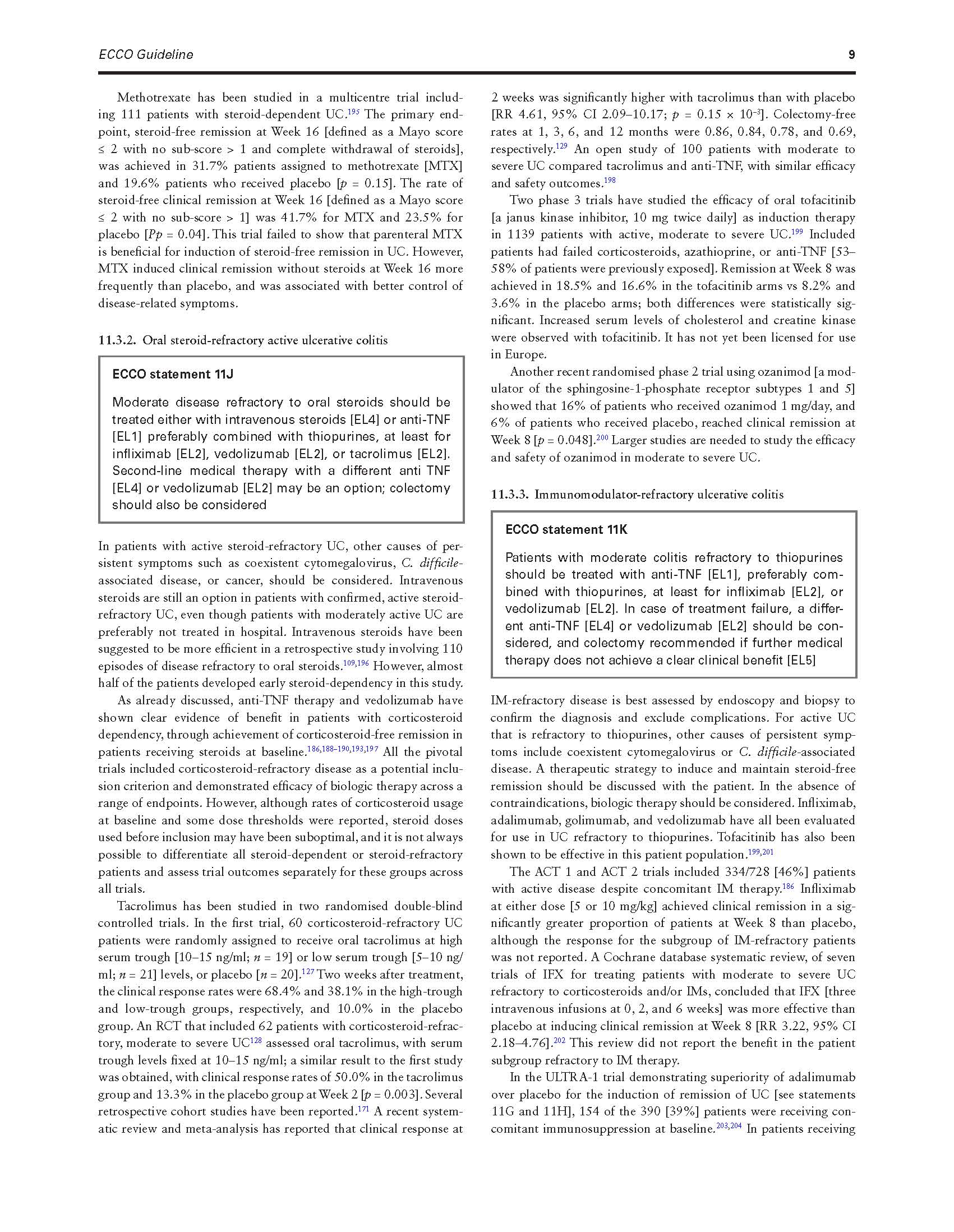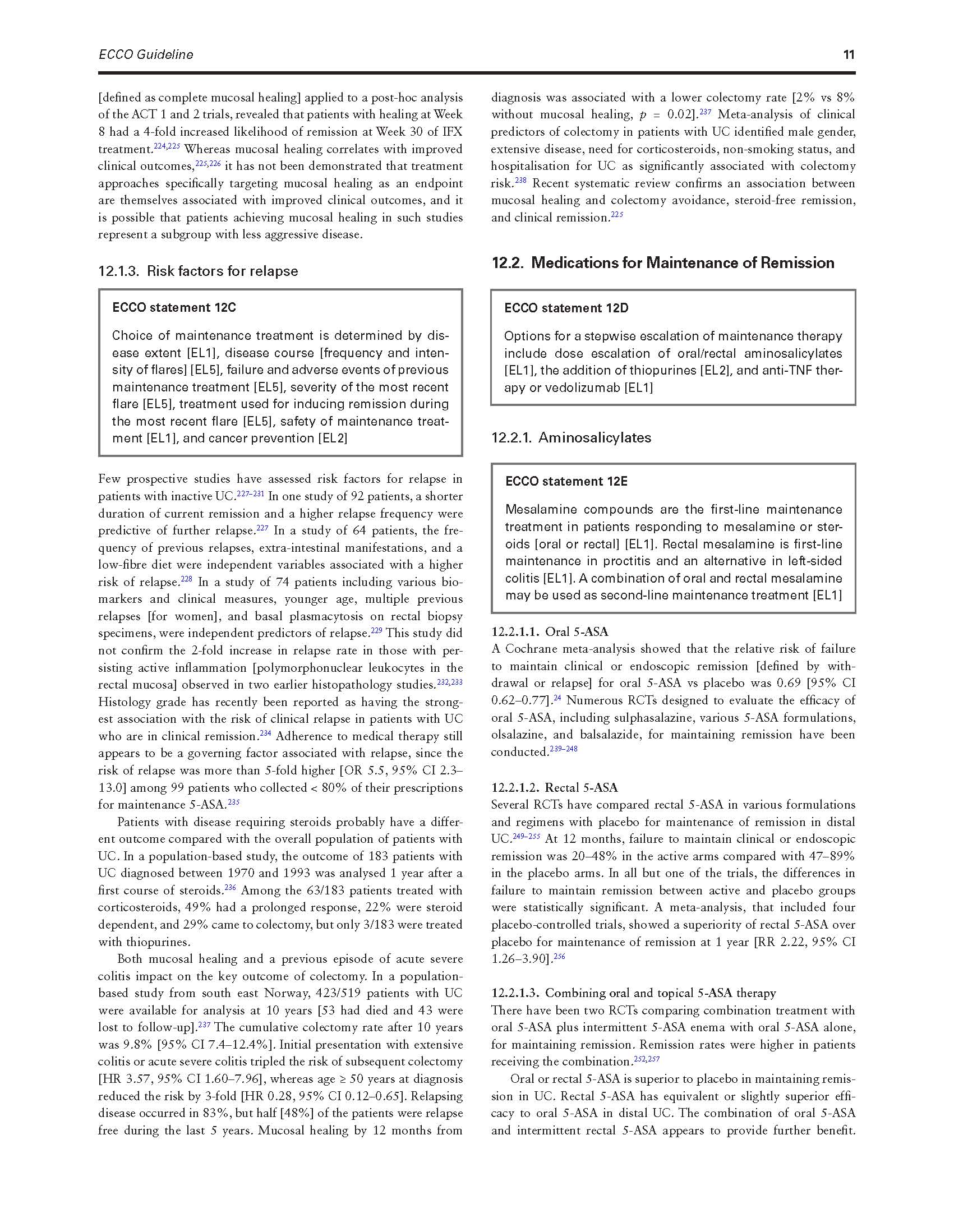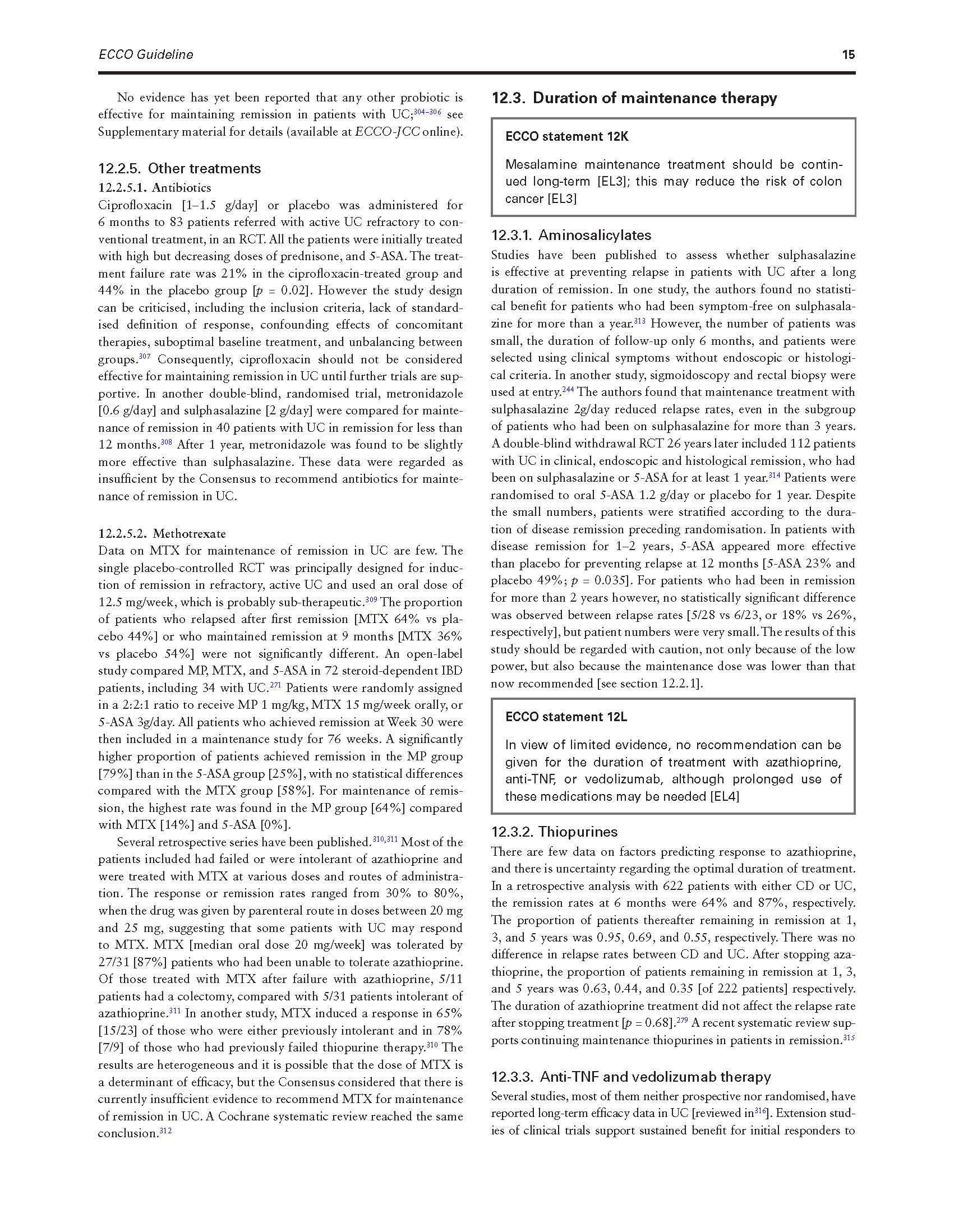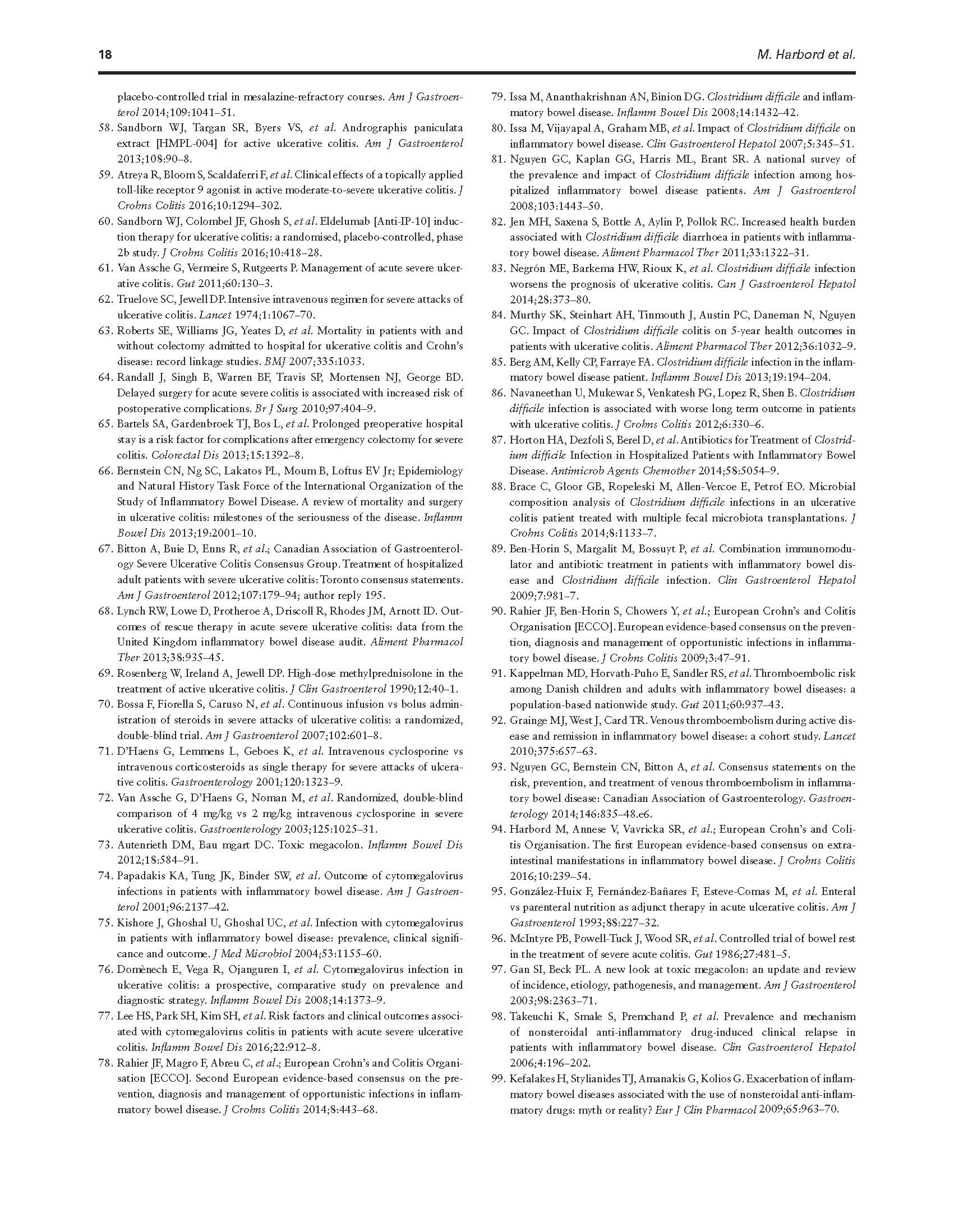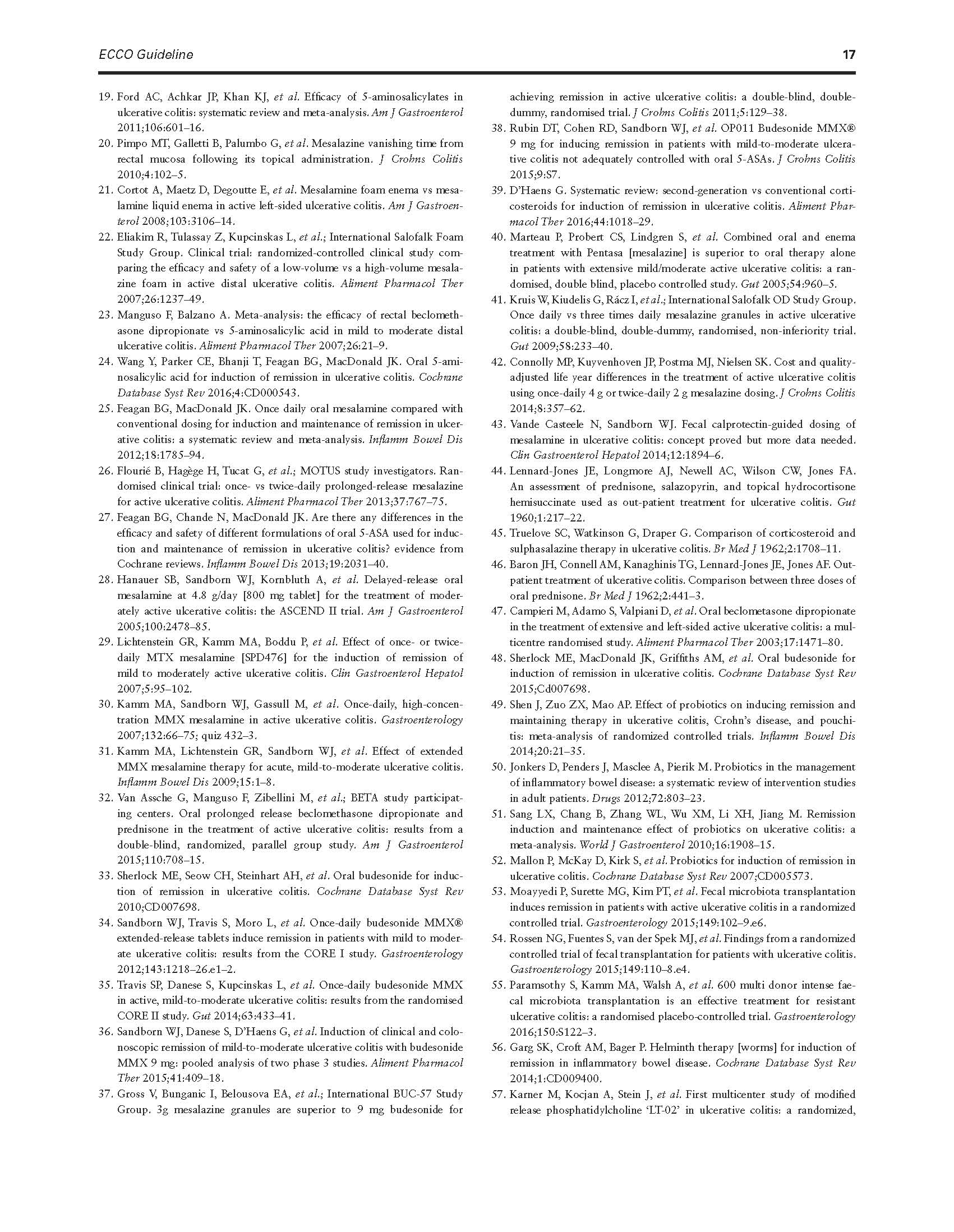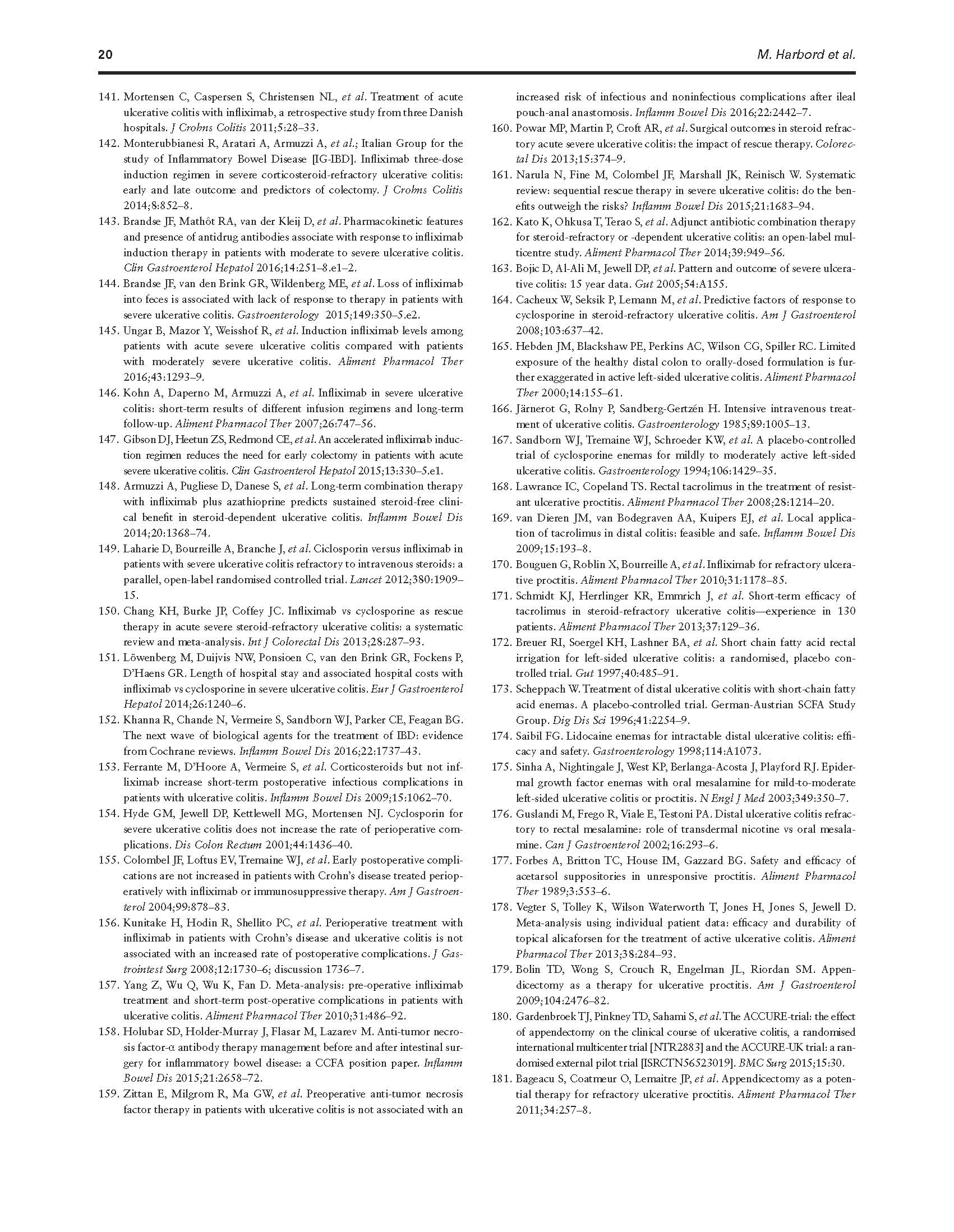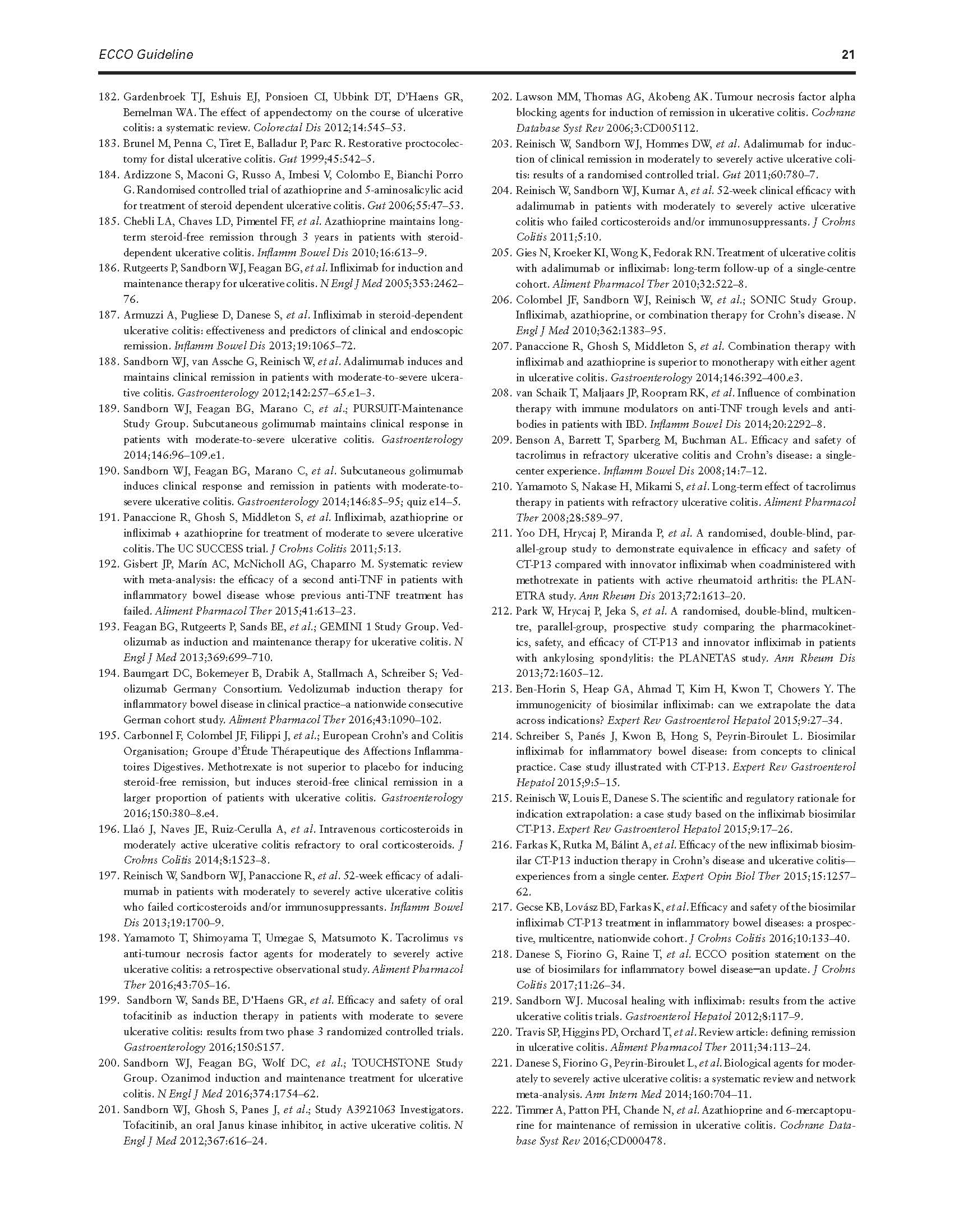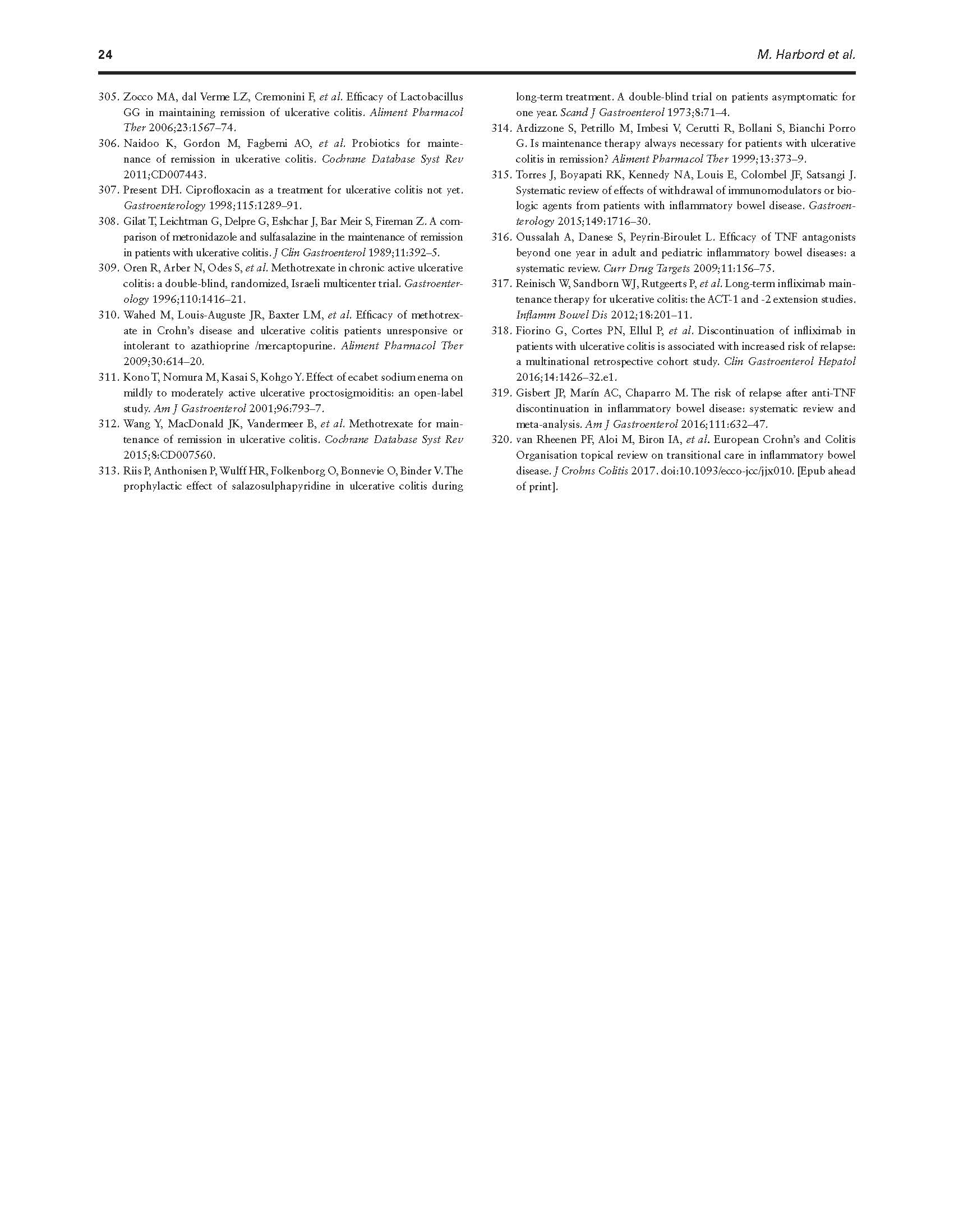Third European Evidence-based Consensus on Diagnosis and Management of Ulcerative Colitis. Part 2: Current Management 时间:2018/04/26
标题:Third European Evidence-based Consensus on Diagnosis and Management of Ulcerative Colitis. Part 2: Current Management
General:
The treatment strategy for ulcerative colitis [UC] is mainly based on the severity, distribution [proctitis, left-sided, extensive]1 and pattern of disease. The latter includes relapse frequency, disease course,response to previous medications, side effects of medication, and extra-intestinal manifestations. Age at onset, and disease duration are also important factors. It is important to distinguish patients with severe UC necessitating hospital admission from those with mild or moderately active disease who can be managed as outpatients.The best validated and most widely used index for identifying severe UC remains that of Truelove and Witts.2 Patients with bloody stool frequency ≥ 6/day and a tachycardia [&&&> 90 min−1], or temperature &&&> 37.8°C, or anaemia [haemoglobin &&&< 10.5 g/dl], or an elevated erythrocyte sedimentation rate [ESR] [&&&> 30 mm/h] have severe UC.Only one additional criterion in addition to the bloody stool frequency≥ 6/day is needed to define a severe attack.3,4 In practice, a C-reactive protein [CRP] of 30 mg/l can be substituted for the ESR.
来源:ECCO Guideline
下载:
![]() 2017 ECCO Harbord M et al. J Crohns Colitis. 2017 Jan 28.pdf
2017 ECCO Harbord M et al. J Crohns Colitis. 2017 Jan 28.pdf
